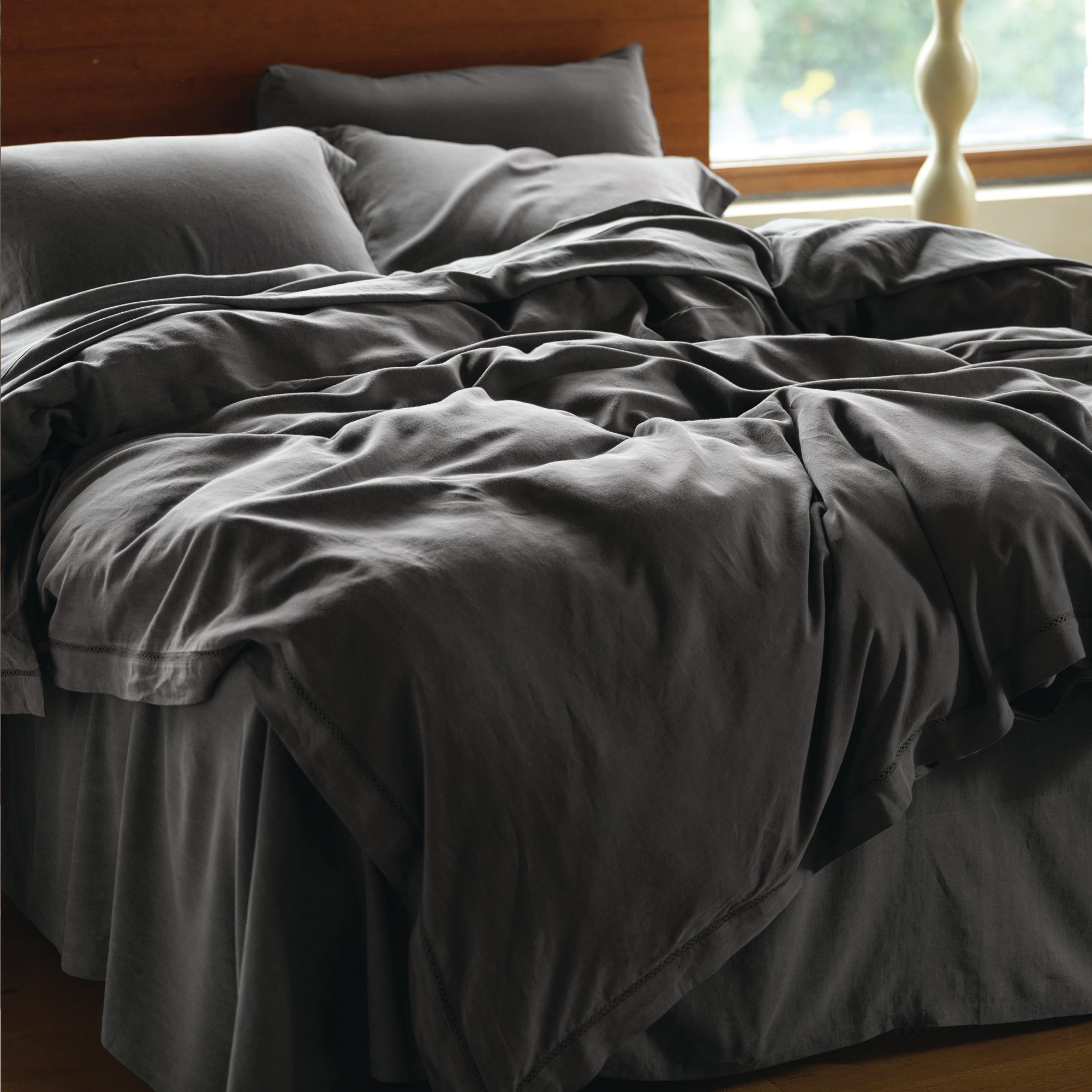There are a few simple things you can do to get better rest
Did you know you’ll spend anywhere from one-quarter to one-third of your life sleeping? But, as much time as we spend doing it, most of us know next to nothing about it.
That’s why we’re devoting today’s blog to exploring the science of sleep—what is it, why do we do it, and what happens during sleep. And, because we love our Double Stitch community, we’re also including a few tips to help you get better rest.
What is sleep (and why do we do it)?
This seems like an obvious question, but a lot of people never really think about the answer. But just ask anyone living with a newborn and they’ll tell you—without it, your brain function decreases and your ability to navigate daily life without needing a nap plummets.
To put it simply, sleep is a biological requirement for humans.
But it’s not just about making us feel good. During sleep, the body is at work repairing itself and adjusting hormone levels.
What happens when we sleep?
Here’s where we break down the real science of sleep.
As you snooze, your body is constantly cycling through two levels of sleep—REM (rapid eye movement) and non-REM sleep.
Your body moves through 4 stages from non-REM to REM sleep:
- Stage 1 – This is the non-REM stage where you’re not quite awake but not fully asleep.
- Stage 2 – Your body begins to relax and your brain activity slows in this non-REM stage. At this point, it is still very easy for someone to wake you up.
- Stage 3 – This is the deepest phase of non-REM sleep. Your muscles are extremely relaxed and brain activity continues to slow down. This stage of sleep helps your body recuperate and can improve memory function.
- Stage 4 – This is where REM sleep finally makes an appearance. During this stage, most of the body enters a state of paralysis but, surprisingly, brain activity increases significantly. REM sleep is where you experience your most vivid dreams and where essential brain repairs happen that affect your memory and ability to learn.
Much like your fingerprints, the way your body cycles through sleep stages is completely unique to you.
How does the body know when to sleep?
There are two things that help your body know when it needs to sleep: sleep-wake homeostasis and circadian rhythms.
Sleep-wake homeostasis is just a fancy way of describing your sleep drive. In essence, the longer you’ve been awake, the stronger your body’s desire to sleep becomes. And, if you deny your body the sleep you need for too long, your body will take control and force you to sleep (in the middle of a board meeting, in a raucous restaurant, or while you’re driving). Long story short, delaying sleep for too long can be downright dangerous.
Circadian rhythms happen over the course of 24 hours and support our sleeping and waking by telling our body when to ramp up and slow down melatonin production, which is often referred to as the “sleep hormone.”
These rhythms are heavily influenced by light, which explains why you’re able to stay up well past bedtime scrolling endlessly on social media. With bright lights entering your eyes, there’s no cue for your body to start producing melatonin.
3 Tips for Getting Good Rest
According to the CDC, lack of sleep has been linked to a whole host of health issues, including depression, obesity, heart disease, and type 2 diabetes.
Most studies find that average adults should get around 7 hours of sleep every night, but this number could be a bit more or a bit less from person to person.
Consistency is Key
Sure, the idea of keeping a consistent bedtime may make you feel as if your life is being micromanaged at first, but the benefits far outweigh the annoyance.
In fact, we’re going to take it a step further and suggest following the CDC’s recommendation to go to bed and get up at the same time every day (yes, even on the weekends).
Doing this helps set your circadian rhythm and condition your brain to begin feeling tired at the same time every evening, increasing the odds you’ll fall asleep easily.
Reserve Your Bed for Sleeping
If possible, avoid watching television or working on your laptop while in bed. Try to keep your bed reserved only for sleeping. This trains your brain to associate your bed with rest and sleep.
Keep it Cool
The optimum bedroom temperature for sleeping might surprise you. Ideally, your bedroom should be on the chilly side with a temperature between 60° and 67° being the ideal range for restful sleep.
Of course, keeping your room this temperature isn’t always feasible, so consider installing a ceiling fan or bringing an oscillating fan into the room, which can make the temperature of the space feel 4-5 degrees cooler.
If you’re a hot sleeper, cooling sheets can work wonders and dramatically improve your sleep quality. Our Linen Lyocell Sheets are crafted from flax-derived linen and natural, plant-derived lyocell fibers, and they are ideal for hot sleepers. They are moisture wicking, ultra-breathable, and designed to keep you cool and comfortable as you sleep.
Understanding the science of sleep can help you get better rest and improve your health. While scientists may not have a definitive answer to why we sleep, there’s no doubt that getting quality sleep has a very real effect on our ability to function and feel good while we do it.
Here’s to getting the sleep you deserve each and every night!
References
John Hopkins Medicine
Sleep Foundation
National Institute of Neurological Disorders and Stroke
Harvard Medical School
























Leave a comment
This site is protected by hCaptcha and the hCaptcha Privacy Policy and Terms of Service apply.